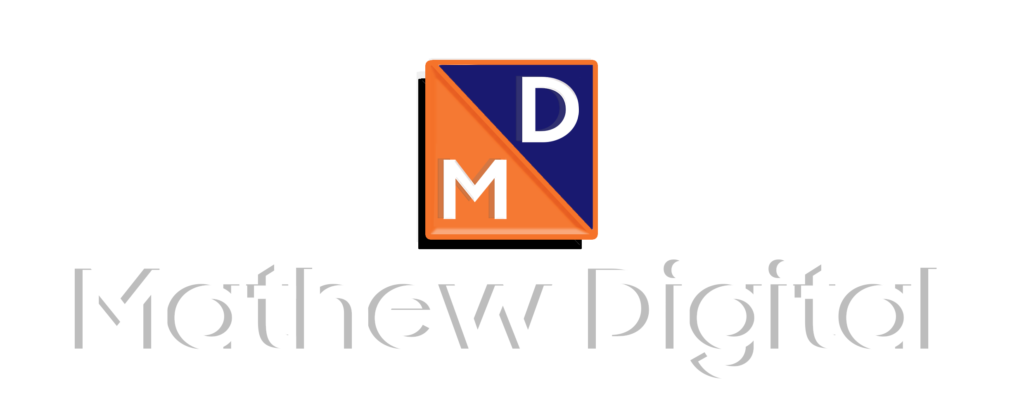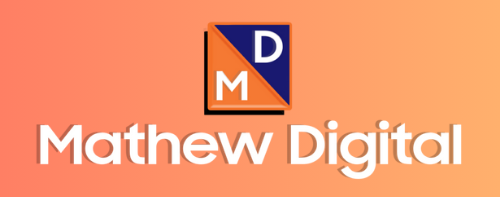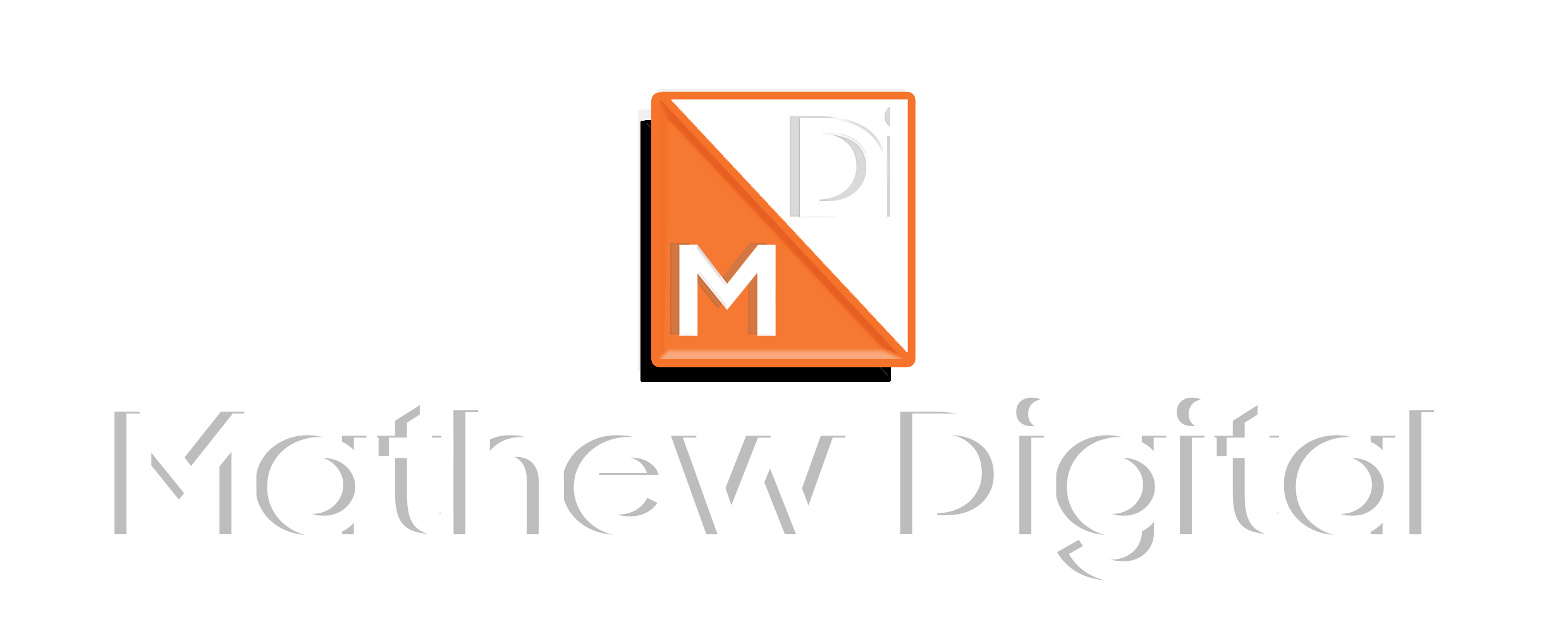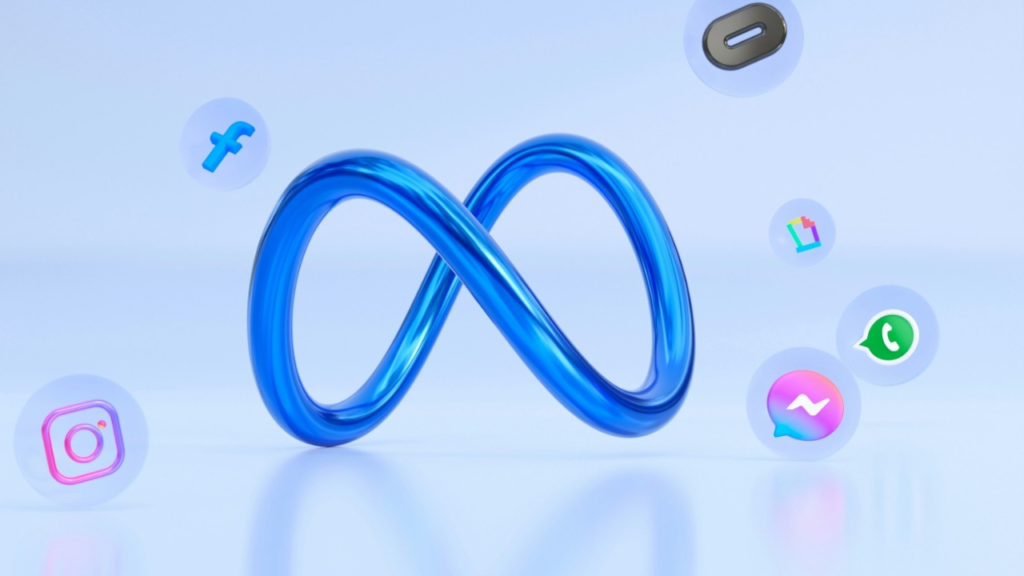
Contents
- 1 Introduction
- 2 Understanding Meta Ads(Formerly Facebook Ads)
- 3 Benefits of Meta Ads:
- 4 Identifying the Ideal Advertisers for Meta:
- 5 Step-by-Step Guide to Creating Meta Ads(Formerly Facebook Ads) :
- 6 Targeting Strategies for Meta Ads(Formerly Facebook Ads)
- 7 Crafting Effective Visuals for Meta Ads(Formerly Facebook Ads) :
- 8 Writing Compelling Ad Copy :
- 9 Tips for Engaging Headlines and Descriptions:
- 10 Optimizing Meta Ad Performance:
- 11 Budgeting and Bidding Strategies:
- 12 Common Challenges and Solutions in Meta Advertising:
- 13 How To Run Meta Ads(Formerly Facebook Ads) Services?
- 14 Frequently Asked Questions for Meta Ads(Formerly Facebook Ads):
Introduction
In today’s digital age, online advertising is essential for businesses looking to reach a wider audience and meet their marketing goals. With Facebook transforming into Meta, the digital advertising landscape has changed dramatically, offering new opportunities and strategies for marketers. Meta Ads(Formerly Facebook Ads) uses advanced technology and extensive user data to create highly targeted and effective ad campaigns. This evolution makes it easier for businesses to connect with their target audience and achieve better results.
Meta Ads(Formerly Facebook Ads) helps businesses of all sizes use smart technology and data to improve their advertising. Whether a small startup or a large corporation, Meta Ads (Formerly Facebook Ads) allow you to target the right audience and see clear results. By learning and using these new tools, businesses can increase brand visibility, connect with potential customers more effectively, and achieve higher conversion rates. In this guide, we’ll explore the strategies, tips, and best practices to help you get the most out of Meta Ads(Formerly Facebook Ads) for your business.
Understanding Meta Ads(Formerly Facebook Ads)
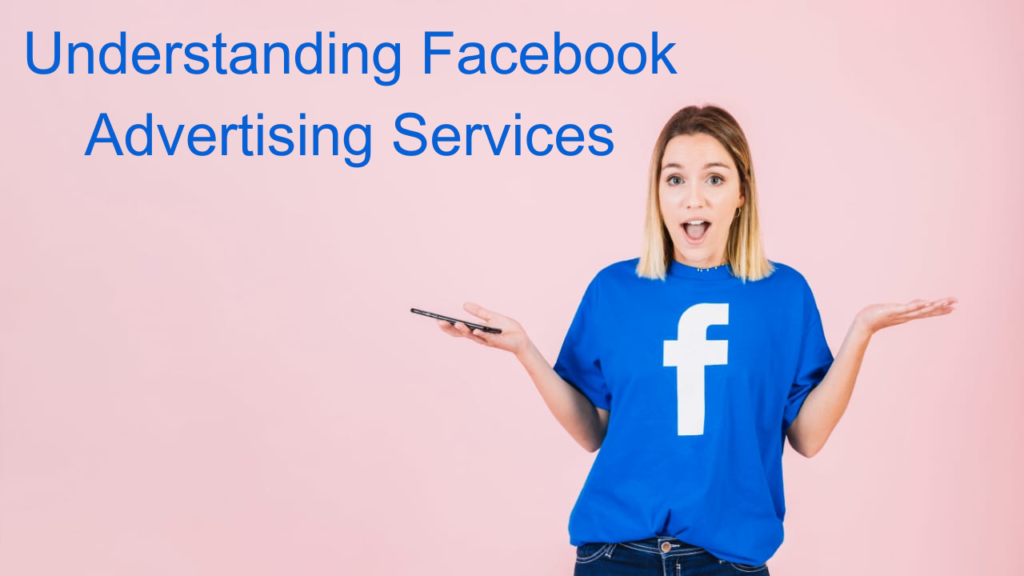
Overview of Meta Ads: Meta Ads, formerly known as Facebook Ads, represent a powerful tool in digital marketing, enabling businesses to promote their products and services across Meta’s ecosystem, which includes Facebook, Instagram, Messenger, and Audience Network. These ads leverage Meta’s vast user base and advanced targeting capabilities to reach specific demographics, interests, and behaviors.
Meta Ads (Formerly Facebook Ads) offers various ad formats such as image, video, carousel, and collection ads, allowing businesses to creatively showcase their offerings. They also provide robust analytics and tracking tools to measure ad performance and optimize campaigns in real time. With options for different campaign objectives like brand awareness, traffic generation, conversions, and more, Meta Ads (Formerly Facebook Ads) cater to diverse marketing goals.
Overall, Meta Ads (Formerly Facebook Ads) empower businesses to engage with their target audience effectively, drive meaningful interactions, and achieve measurable results in today’s competitive digital advertising landscape.
The Evolution from Facebook to Meta: The Evolution from Facebook to Meta marks a significant shift in the company’s vision and offerings. Originally known primarily for social networking, Facebook expanded its horizons to encompass a broader range of digital experiences under the Meta umbrella. This evolution reflects a strategic pivot towards virtual reality (VR), augmented reality (AR), and the metaverse—a collective virtual shared space, created by the convergence of virtually enhanced physical reality and physically persistent virtual worlds.
Meta’s rebranding signifies its commitment to advancing technologies beyond traditional social media, aiming to redefine how people connect, work, and interact in digital environments. This transformation not only includes a new corporate identity but also introduces innovative products and services that integrate VR and AR into everyday experiences.
For advertisers and businesses, this evolution means broader opportunities to engage with audiences in immersive ways across Meta’s expanding platforms, offering new dimensions for creative storytelling, consumer engagement, and brand interaction. As Meta continues to develop its metaverse vision, businesses can expect continued innovation and new avenues for digital marketing and customer engagement.
Benefits of Meta Ads:
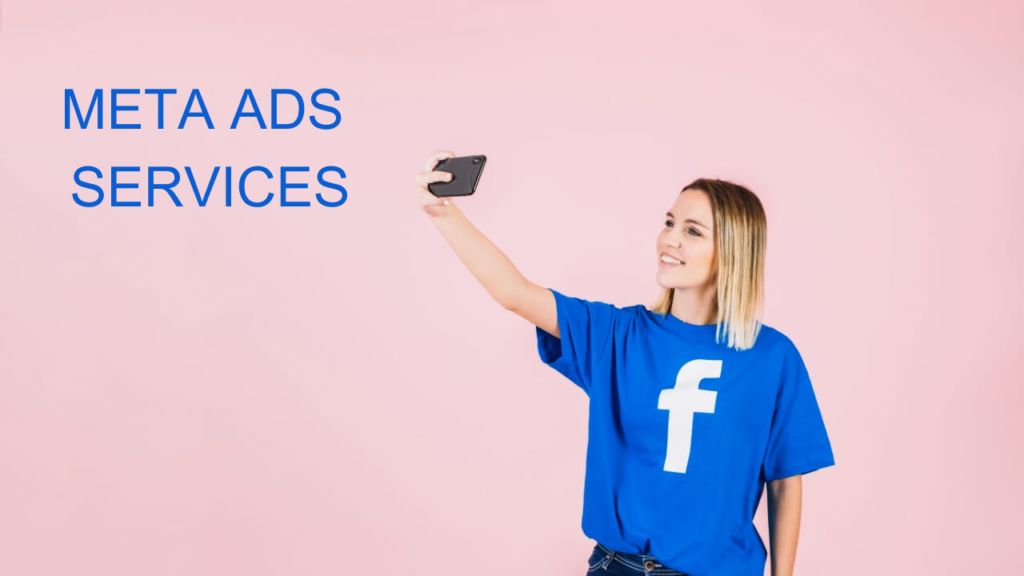
Advertising on Meta offers businesses a myriad of benefits:
Massive Reach: With billions of active users across Meta platforms like Facebook, Instagram, and Messenger, businesses can reach a diverse global audience.
Advanced Targeting: Meta Ads(Formerly Facebook Ads) provide precise targeting options based on demographics, interests, behaviors, and more, ensuring ads reach the right people at the right time.
Multiple Ad Formats: From images and videos to carousel and collection ads, Meta offers versatile ad formats to creatively showcase products and services.
Measurable Results: Robust analytics tools enable real-time tracking of ad performance, allowing businesses to optimize campaigns and maximize ROI.
Engagement Opportunities: Interactive ad features and immersive formats (like AR ads) enhance user engagement and brand interaction.
Scalability: Whether a small startup or a large enterprise, Meta Ads(Formerly Facebook Ads) are scalable, accommodating businesses of all sizes and budgets.
Cross-Platform Integration: Ads on Meta seamlessly integrate across Facebook, Instagram, Messenger, and Audience Network, maximizing campaign reach and impact.
Innovative Technology: Leveraging Meta’s advancements in VR, AR, and AI, advertisers can pioneer cutting-edge ad experiences and stay ahead in digital marketing trends.
Identifying the Ideal Advertisers for Meta:

Identifying the ideal advertisers for Meta involves pinpointing businesses and organizations that can benefit most from its unique advertising capabilities and expansive reach. Typically, ideal advertisers for Meta include:
E-commerce Businesses: Companies selling products online can leverage Meta’s targeted advertising to reach potential customers based on their interests and behaviors, driving sales and conversions.
Local Businesses: Small businesses looking to attract customers within specific geographic locations can utilize Meta Ads(Formerly Facebook Ads) to target local audiences effectively.
Brands Focused on Visual Content: Businesses with visually appealing products or services, such as fashion, beauty, or food industries, can benefit from Meta’s image and video ad formats to showcase their offerings.
Tech Startups and Innovators: Companies in the tech industry, especially those developing new technologies or apps, can use Meta Ads(Formerly Facebook Ads) to raise awareness, drive app installs, and engage with early adopters.
Service-Based Businesses: Professionals offering services like consulting, coaching, or education can use Meta Ads(Formerly Facebook Ads) to generate leads, promote events, and build client relationships.
Events and Entertainment: Promoters of events, concerts, and entertainment venues can leverage Meta Ads(Formerly Facebook Ads) to increase ticket sales and promote upcoming events to targeted audiences.
Nonprofit Organizations: Charities and nonprofits can utilize Meta Ads(Formerly Facebook Ads) to raise awareness, attract volunteers, and drive donations for their causes.
Step-by-Step Guide to Creating Meta Ads(Formerly Facebook Ads) :

Setting Objectives: Creating effective Meta Ads(Formerly Facebook Ads) begins with setting clear objectives that align with your business goals. Here’s a step-by-step guide to setting objectives for your Meta Ads(Formerly Facebook Ads) :
Define Your Goals: Start by identifying what you aim to achieve with your Meta Ads(Formerly Facebook Ads) . Are you looking to increase brand awareness, drive website traffic, generate leads, boost sales, or promote a specific product/service? Clearly define your primary objective.
Establish Key Performance Indicators (KPIs): Determine how you will measure the success of your ad campaign. KPIs could include metrics such as click-through rate (CTR), conversion rate, cost per acquisition (CPA), return on ad spend (ROAS), or engagement metrics like likes, comments, and shares.
Set Specific Targets: Quantify your goals by setting specific targets for each KPI. For example, if your goal is to increase sales, specify the number of conversions or revenue targets you aim to achieve within a given timeframe.
Understand Your Audience: Identify your target audience based on demographics (age, gender, location), interests, behaviors, and other relevant criteria. This understanding will guide your targeting strategy and ensure your ads reach the right people.
Budget Allocation: Determine your advertising budget for the campaign. Consider factors such as the duration of the campaign, ad placements, and the competitiveness of your target audience. Allocate your budget to maximize reach and achieve your objectives effectively.
Choose Ad Formats: Select the most suitable ad formats (e.g., image, video, carousel, collection) that align with your campaign goals and resonate with your target audience. Each format offers unique opportunities for storytelling and engagement.
Craft Compelling Messaging: Develop clear and compelling ad copy that communicates your value proposition and resonates with your audience. Tailor your messaging to address the pain points, desires, or interests of your target audience.
Create Call-to-Actions (CTAs): Include actionable CTAs in your ad copy to prompt users to take desired actions, such as “Shop Now,” “Learn More,” “Sign Up,” or “Book Now.” CTAs should be clear, compelling, and relevant to your campaign objective.
Designing Low-Friction Conversions:
Designing Meta Ads(Formerly Facebook Ads) for low-friction conversions involves optimizing your ad campaign to minimize barriers and encourage seamless user actions. Here’s a step-by-step guide to creating Meta Ads(Formerly Facebook Ads) with low-friction conversions:
Understand Conversion Points: Identify the specific actions you want users to take after interacting with your ad. This could include signing up for a newsletter, downloading an app, requesting a quote, or making a purchase.
Simplify Landing Pages: Ensure that your landing pages are optimized for conversions by removing distractions and focusing on the primary call-to-action (CTA). Use clear and persuasive messaging that reinforces what users saw in the ad.
Utilize Lead Forms: Meta Ads(Formerly Facebook Ads) offer lead generation forms that users can fill out directly within the ad without leaving the platform. Customize these forms to collect essential information while keeping them concise and user-friendly.
Enable Instant Experiences: Use Meta’s Instant Experience feature to create immersive, full-screen experiences that showcase your products or services. Instant Experiences can include carousels, videos, and CTAs, providing a seamless path to conversion.
Implement Messenger Ads: Engage users directly through Messenger with ads that encourage conversations. Use Messenger bots to automate responses and guide users toward completing actions like scheduling appointments or making inquiries.
Offer Incentives: Consider offering incentives such as discounts, free trials, or exclusive offers to encourage immediate action. Highlight these incentives prominently in your ad copy to capture attention and drive conversions.
Optimize for Mobile: Given the prevalence of mobile users, ensure that your ad and landing page are fully optimized for mobile devices. Test load times, readability, and functionality across different screen sizes to provide a smooth user experience.
Track and Optimize Performance: Monitor the performance of your ads using Meta’s analytics tools. Track conversion metrics such as conversion rate, cost per conversion, and conversion value to identify areas for improvement and optimization.
Targeting Strategies for Meta Ads(Formerly Facebook Ads)

Audience Segmentation: Targeting strategies for Meta Ads rely heavily on audience segmentation to ensure your ads reach the right people with precision. Here’s a step-by-step guide to effective audience segmentation for Meta Ads(Formerly Facebook Ads) :
Define Your Audience: Start by clearly defining who your ideal customers are based on demographics (age, gender, location), interests, behaviors, and other relevant factors. Consider your existing customer data and market research to inform this definition.
Use Custom Audiences: Upload customer lists, website visitors, or app users to create Custom Audiences. Meta matches this data with user profiles, allowing you to target ads specifically to people who have interacted with your business before.
Create Lookalike Audiences: Utilize Lookalike Audiences to reach new users who share similarities with your existing customers or Custom Audiences. Meta uses its algorithms to identify profiles with similar characteristics and behaviors, expanding your reach while maintaining relevance.
Utilize Detailed Targeting Options: Leverage Meta’s detailed targeting options to refine your audience further. Target users based on interests, behaviors (such as purchase intent or device usage), job titles, life events, and more to ensure your ads are seen by those most likely to engage.
Combine Targeting Options: Combine different targeting criteria to create precise audience segments. For example, target women aged 25-35 who are interested in fitness and live in urban areas. Experiment with various combinations to find the most effective audience for your campaign objectives.
Exclude Irrelevant Audiences: Exclude audiences that are unlikely to convert or are not within your target demographic. This helps optimize your ad spend and ensures your ads are seen by those who are most likely to take action.
Monitor and Adjust: Regularly monitor the performance of your targeted audiences using Meta’s analytics tools. Adjust your targeting criteria based on performance metrics such as click-through rate, conversion rate, and return on ad spend (ROAS) to optimize campaign effectiveness.
Custom and Lookalike Audiences:
Targeting strategies for Meta Ads(Formerly Facebook Ads) can significantly benefit from Custom Audiences and Lookalike Audiences, two powerful tools that enhance ad targeting precision and effectiveness:
Custom Audiences:
– Definition: Custom Audiences allow you to target users based on specific data you already possess, such as customer lists, website visitors, app users, or engagement with your Facebook Page or Instagram profile.
– Creation Process: Upload your customer data or use the Facebook Pixel to automatically create Custom Audiences of people who have interacted with your website or app. You can also create audiences based on actions taken, like purchases or form submissions.
– Benefits: Custom Audiences enable highly targeted campaigns tailored to users who have already shown interest in your brand or performed specific actions, increasing the likelihood of conversion.
Lookalike Audiences:
– Definition: Lookalike Audiences help you find new potential customers who share similarities with your existing Custom Audiences. Meta uses its algorithms to identify users who exhibit similar behaviors, interests, and demographics.
– Creation Process: Start with a source audience (e.g., a Custom Audience) and create a Lookalike Audience based on that source. Meta will generate a new audience that statistically resembles your source audience in terms of traits and behaviors.
– Benefits: Lookalike Audiences expand your reach beyond your existing customer base to find new, relevant users who are likely to be interested in your products or services. This can help you attract high-potential leads and grow your customer base effectively.
Best Practices for Using Custom and Lookalike Audiences:
– Segmentation: Create multiple Custom Audiences based on different criteria (e.g., recent purchasers, high-value customers) to tailor your messaging and offers accordingly.
– Refresh and Update: Regularly update your Custom Audiences to ensure they reflect current customer behaviors and preferences.
– Testing and Optimization: Experiment with different Lookalike Audience sizes (e.g., 1%, 5%, 10%) to find the optimal balance between reach and relevance.
– Combine with Other Targeting Options: Enhance your targeting by combining Custom and Lookalike Audiences with other targeting criteria such as demographics, interests, and behaviors for precise ad delivery.
Crafting Effective Visuals for Meta Ads(Formerly Facebook Ads) :
Best Practices for Ad Images: Crafting effective visuals for Meta Ads(Formerly Facebook Ads) involves following best practices to capture attention, convey your message, and engage your audience effectively. Here are key best practices for creating compelling ad images:
High-Quality Images: Use high-resolution images that are clear, crisp, and visually appealing. Avoid blurry or pixelated images that can detract from your ad’s professionalism.
Relevance to Audience: Ensure your images resonate with your target audience. Use visuals that reflect your brand identity, product/service features, and the interests of your audience.
Eye-Catching Design: Create visually striking images that grab attention and stand out in users’ feeds. Use bold colors, contrasting elements, and creative compositions to make your ad visually appealing.
Focus on the Product or Message: Highlight your product or service prominently in the image. Use close-ups, lifestyle shots, or demonstrations to showcase its key benefits and features.
Clear and Simple: Keep your images simple and easy to understand. Avoid clutter and unnecessary elements that could distract from your main message.
Brand Consistency: Maintain consistency with your brand’s visual identity, including colors, fonts, and style. This helps reinforce brand recognition and credibility.
Emotional Appeal: Use imagery that evokes emotion or connects with your audience on a personal level. Images that convey happiness, excitement, or fulfillment can resonate more deeply.
Compliance with Guidelines: Adhere to Meta’s advertising guidelines regarding image size, text overlay limits, and content restrictions to ensure your ads are approved promptly.
Test Different Variations: Experiment with different image variations to see what resonates best with your audience. A/B testing can help determine which images drive higher engagement and conversions.
Mobile Optimization: Given the prevalence of mobile users, ensure your images are optimized for mobile viewing. Test how your images appear on different devices and adjust accordingly.
Utilizing Videos in Meta Ads(Formerly Facebook Ads):
Utilizing videos in Meta Ads(Formerly Facebook Ads) can significantly enhance engagement and convey your message more dynamically. Here are key strategies and best practices for effectively using videos in your Meta Ads(Formerly Facebook Ads):
Capture Attention Quickly: Start your video with a compelling hook within the first few seconds to grab viewers’ attention as they scroll through their feeds.
Focus on Storytelling: Use storytelling techniques to create a narrative that resonates with your audience. Showcase how your product or service solves a problem or enhances their lives.
Keep it Short and Concise: Aim for videos that are concise and to the point. Research shows that shorter videos (15-30 seconds) tend to perform better in terms of retention and engagement on social media platforms.
Highlight Key Features: Clearly demonstrate the key features and benefits of your product or service. Use close-ups, demonstrations, and overlays to highlight important details.
Brand Identification: Incorporate your brand elements early in the video (logo, brand colors, etc.) to reinforce brand awareness and recognition.
Add Captions: Since many users watch videos without sound, include captions or subtitles to ensure your message is conveyed effectively even when muted.
Optimize for Mobile: Design videos with mobile users in mind. Ensure they are formatted for vertical viewing and test how they appear on different devices to optimize the viewing experience.
Include a Strong Call-to-Action (CTA): Clearly instruct viewers on what action to take next, whether it’s visiting your website, making a purchase, or signing up for a newsletter.
Test and Iterate: Experiment with different video formats, lengths, and messaging to see what resonates best with your audience. Use analytics to track performance metrics and optimize your video strategy accordingly.
Compliance with Guidelines: Adhere to Meta’s advertising policies regarding video length, content restrictions, and quality standards to ensure your ads are approved promptly.
Writing Compelling Ad Copy :
Key Elements of a Successful Ad:
Writing compelling ad copy for Meta Ads(Formerly Facebook Ads) involves incorporating key elements that resonate with your audience and drive action. Here are essential elements to include in your ad copy for success:
Clear Value Proposition: Clearly communicate what sets your product or service apart and why users should choose your brand. Highlight the benefits and solutions your offering provides to address customer needs or pain points.
Relevant Messaging: Tailor your ad copy to resonate with your target audience’s interests, demographics, and behaviors. Use language and tone that aligns with their preferences and motivations.
Compelling Headline: Grabbing attention with a strong headline that sparks curiosity or addresses a specific problem. Use actionable language and include keywords relevant to your offering.
Engaging Body Text: Expand on your headline with concise and persuasive body text. Focus on key features, benefits, or unique selling points (USPs) that reinforce your value proposition.
Call-to-Action (CTA): Include a clear and compelling CTA that prompts users to take the desired action, such as “Shop Now,” “Learn More,” “Sign Up Today,” or “Get Started.” Make the CTA prominent and actionable.
Social Proof: Incorporate testimonials, reviews, or endorsements from satisfied customers to build credibility and trust. Social proof reinforces your claims and encourages potential customers to convert.
Urgency or Scarcity: Create a sense of urgency or scarcity to encourage immediate action. Use phrases like “Limited Time Offer,” “Act Now,” or “While Supplies Last” to motivate users to take action promptly.
Emotional Appeal: Appeal to emotions by highlighting how your product or service can improve customers’ lives, solve their problems, or fulfill their desires. Use storytelling techniques to create a connection with your audience.
Benefit-Focused Language: Focus on benefits rather than features. Clearly explain how your offering will improve the customer’s situation or provide value, addressing their specific needs or desires.
Conciseness and Clarity: Keep your ad copy concise and easy to understand. Avoid jargon or complex language that may confuse or alienate your audience. Use bullet points or numbered lists for clarity if necessary.
Tips for Engaging Headlines and Descriptions:
Writing engaging headlines and descriptions is crucial for capturing attention and driving clicks in Meta Ads(Formerly Facebook Ads). Here are some tips for creating compelling ad copy for your headlines and descriptions:
Tips for Engaging Headlines:
Be Clear and Concise: Keep your headline succinct and directly related to your offer or message. Use simple language that is easy to understand at a glance.
Highlight Benefits or Solutions: Focus on the primary benefit or solution your product/service provides. Clearly communicate what problem you solve or how you can improve the customer’s life.
Use Actionable Language: Incorporate verbs that prompt immediate action, such as “Discover,” “Explore,” “Unlock,” “Transform,” or “Achieve.”
Create Curiosity: Spark curiosity or intrigue with your headline by posing a question, teasing a solution, or hinting at a benefit. Make users want to learn more.
Include Numbers or Statistics: Numbers and statistics can add credibility and attract attention. For example, “Boost Your Sales by 50% with Our New Strategy.”
Personalize When Possible: Tailor your headline to resonate with your target audience’s interests, needs, or aspirations. Use words that speak directly to their motivations.
Tips for Engaging Descriptions:
Expand on Your Headline: Use the description to provide more details about your offer or product benefits. Reinforce the message conveyed in your headline.
Highlight Unique Selling Points (USPs): Emphasize what makes your product/service unique and why it’s superior to competitors. Focus on what sets you apart.
Use Bullet Points or Lists: Break down key features or benefits into bullet points for clarity and ease of reading. This format makes information more digestible.
Address Objections: Anticipate and address potential objections or concerns your audience may have. Provide reassurance or counterarguments to alleviate doubts.
Include Social Proof: Incorporate testimonials, reviews, or ratings to build trust and credibility. User-generated content can validate your claims and influence decisions.
Create Urgency or Scarcity: Encourage immediate action by highlighting limited-time offers, exclusive deals, or product availability. Use phrases like “Act Now” or “Limited Stock.”
Call-to-Action (CTA): End your description with a strong and clear CTA that directs users on what to do next. Make it easy for them to take the desired action.
Tailor for Mobile: Ensure your descriptions are concise and formatted for easy readability on mobile devices. Mobile users often skim content, so prioritize key information.
Optimizing Meta Ad Performance:

Tracking and Analyzing Metrics: Optimizing Meta Ad performance requires diligent tracking and analysis of key metrics to understand how your campaigns are performing and where improvements can be made. Here’s a guide on tracking and analyzing metrics for Meta Ads(Formerly Facebook Ads):
Tracking Metrics:
Impressions: Monitor the number of times your ad is displayed to users. High impressions indicate good reach, but it’s essential to ensure your ad is reaching your target audience effectively.
Click-Through Rate (CTR): CTR measures the percentage of users who click on your ad after seeing it. A higher CTR indicates that your ad is compelling and relevant to your audience.
Conversion Rate: Track the percentage of users who complete a desired action after clicking on your ad, such as making a purchase, signing up for a newsletter, or downloading an app.
Cost Per Click (CPC) or Cost Per Thousand Impressions (CPM): Monitor how much you’re paying for each click or thousand impressions. Optimizing CPC or CPM can help maximize your ad budget efficiency.
Return on Ad Spend (ROAS): Calculate the revenue generated for every dollar spent on advertising. ROAS helps measure the effectiveness of your ad campaigns in driving sales and revenue.
Engagement Metrics: Monitor likes, comments, shares, and other interactions with your ad. Engagement metrics indicate how well your ad resonates with your audience and can help gauge brand awareness and customer interest.
Audience Insights: Use Meta’s Audience Insights tools to gain deeper insights into your audience demographics, interests, and behaviors. Adjust your targeting based on these insights to improve ad performance.
Analyzing Metrics:
Compare Performance Over Time: Track metrics over different time periods (daily, weekly, monthly) to identify trends and patterns in ad performance. Look for changes in CTR, conversion rates, and other metrics.
A/B Testing: Experiment with different ad variations (e.g., headlines, images, CTAs) to see which performs best. Compare metrics between variations to identify elements that resonate most with your audience.
Optimize Campaign Settings: Adjust bidding strategies, ad placements, and targeting options based on performance metrics. Allocate the budget to high-performing ads or audience segments to maximize ROI.
Monitor Ad Frequency: Watch how often your ad is shown to the same users (ad frequency). High ad frequency can lead to ad fatigue and decreased performance. Rotate creatives or adjust targeting to maintain engagement.
ROI Analysis: Calculate the overall return on investment for your ad campaigns. Consider both direct revenues generated from ad conversions and indirect benefits like increased brand awareness and customer lifetime value.
Adjust Campaign Strategy: Use insights from metrics analysis to refine your ad strategy. Iterate on successful tactics and pivot away from strategies that aren’t yielding desired results.
Continuous Improvement: Ad performance analysis should be an ongoing process. Regularly review and optimize your campaigns based on real-time data to ensure long-term success and profitability.
A/B Testing for Continuous Improvement: A/B testing is a powerful method for optimizing Meta Ad performance by comparing two versions (A and B) of an ad to determine which one performs better. Here’s a guide on how to conduct A/B testing effectively for continuous improvement:
Steps for A/B Testing:
Define Your Hypothesis: Start with a clear objective and hypothesis. Identify the specific element you want to test (e.g., headline, image, CTA) and what outcome you expect to achieve (e.g., higher CTR, improved conversion rate).
Identify Variables to Test: Choose one variable to test at a time to ensure clarity in results. Common elements to test include:
– Headline: Test different headlines to see which one attracts more clicks.
– Image or Video: Compare visuals to determine which one resonates better with your audience.
– CTA: Experiment with different call-to-action phrases or buttons to encourage more conversions.
– Ad Copy: Test variations in ad copy to see which messaging leads to better engagement.
Create Variations: Develop two versions (A and B) of your ad with a single variable difference. Ensure both versions are similar in other aspects (e.g., targeting, budget) to isolate the impact of the variable being tested.
Set Up Your Experiment: Use Meta’s ad manager tools to set up your A/B test. Assign an equal budget and duration to each variation. Define your success metrics (e.g., CTR, conversion rate) to measure performance.
Run the Test Concurrently: Launch both ad variations simultaneously to ensure consistency in ad delivery and audience behavior. Monitor performance metrics in real-time or periodically throughout the test duration.
Collect and Analyze Data: Gather data on key metrics for each variation. Compare performance metrics such as CTR, conversion rate, and cost-per-action (CPA) to determine which ad performs better according to your hypothesis.
Draw Conclusions: Analyze the results to identify the winning variation. Consider statistical significance and practical impact when interpreting results. The winning variation should inform future ad strategies.
Implement Learnings: Apply insights from your A/B test to optimize future ad campaigns. Use successful elements from the winning variation to refine ad creatives, targeting strategies, and overall campaign effectiveness.
Iterate and Repeat: A/B testing should be an ongoing process to continuously improve ad performance. Test new variables or hypotheses regularly to stay ahead of changes in audience behavior and market trends.
Budgeting and Bidding Strategies:
Budgeting and bidding strategies play a crucial role in optimizing Meta Ad campaigns to achieve your advertising goals effectively. Here’s a comprehensive guide on how to approach budgeting and bidding for Meta Ads(Formerly Facebook Ads):
Budgeting Strategies:
Set Clear Objectives: Define your campaign goals (e.g., increase website traffic, boost sales, generate leads) to determine how much budget is needed to achieve them. Align your budget with your overall marketing objectives.
Allocate Budget Wisely: Allocate your budget based on campaign priorities and expected ROI. Consider factors such as campaign duration, audience size, and the competitiveness of your industry.
Test with Small Budgets: Start with smaller budgets to test ad performance and optimize before scaling. This allows you to refine targeting, messaging, and creative elements without committing large sums upfront.
Monitor Spending: Regularly monitor your budget utilization to ensure you’re on track with your spending goals. Adjust budgets based on campaign performance and real-time data insights.
Consider Seasonality and Trends: Adjust budgets seasonally or during peak periods when demand for your products/services may fluctuate. Be prepared to increase budgets for high-performing campaigns or strategic opportunities.
Bidding Strategies:
Understand Bid Types: Meta offers various bidding options, including:
– Cost-per-click (CPC): Pay when users click on your ad.
– Cost-per-Impression (CPM): Pay for every 1,000 impressions of your ad.
– Cost-per-action (CPA): Pay when a specific action (like a purchase or form submission) is completed.
Choose the Right Bid Strategy: Select a bid strategy aligned with your campaign goals and budget:
– Manual Bidding: Set your own bid amounts based on the value you place on conversions or actions.
– Automatic Bidding: Let Meta optimize bids for you to achieve the best results within your budget.
Monitor Bid Performance: Regularly review bid performance metrics such as average CPC or CPM, ad position, and impression share. Adjust bids based on performance data to maximize ad visibility and efficiency.
Use Bid Adjustments: Utilize bid adjustments to optimize bidding based on specific factors such as device type, location, time of day, or audience demographics. Adjust bids higher for more valuable segments or times.
Bid Strategy Testing: Experiment with different bidding strategies to determine which one yields the best results for your campaign objectives. Test bid adjustments and monitor their impact on ad performance.
Optimize for Conversions: If your goal is to drive specific actions (like purchases or sign-ups), consider using CPA bidding to optimize bids based on conversions. This can help maximize ROI by focusing spending on actions most likely to generate revenue.
Stay Competitive: Monitor competitors’ bidding strategies and adjust your own bids accordingly to maintain competitiveness in the auction and maximize ad reach.
Continuous Optimization:
– Monitor and Adjust: Continuously monitor campaign performance metrics and adjust budgeting and bidding strategies based on real-time data insights. Regular optimization ensures your ads remain effective and cost-efficient over time.
– Test and Iterate: Test different budgeting and bidding strategies, as well as combinations of targeting and ad creatives, through A/B testing and iterative improvements. This iterative approach helps refine your approach and maximize campaign performance.
Common Challenges and Solutions in Meta Advertising:
Meta advertising, like any digital marketing endeavor, presents various challenges that marketers often encounter. Here are some common challenges along with potential solutions:
Common Challenges:
Ad Fatigue:
– Challenge: Users may become desensitized to seeing the same ad repeatedly, leading to decreased engagement and ad performance over time.
– Solution: Rotate ad creatives regularly to keep content fresh and engaging. Use A/B testing to experiment with different variations of ads to maintain interest. Segment audiences effectively to avoid overexposure.
High Competition:
– Challenge: As more businesses advertise on Meta, competition for ad space increases, potentially driving up costs and reducing ad visibility.
– Solution: Focus on targeting specific niche audiences with personalized messaging. Use precise targeting options and leverage audience insights to identify underserved segments. Monitor competitors’ strategies and adjust your approach accordingly.
Ad Approval Delays:
– Challenge: Ads may face delays in approval due to non-compliance with Meta’s advertising policies or technical issues.
– Solution: Familiarize yourself with Meta’s advertising guidelines and ensure ad content meets all requirements before submission. Use the Ad Preview tool to check compliance before launching campaigns. Plan campaigns well in advance to accommodate approval timelines.
Changing Algorithms and Policies:
– Challenge: Meta frequently updates its algorithms and policies, impacting ad performance and strategy effectiveness.
– Solution: Stay informed about platform updates and adapt your strategies accordingly. Test new features and ad formats as they become available. Maintain flexibility in your approach to navigate algorithm changes effectively.
Measurement and Attribution:
– Challenge: Attribution of ad success to specific campaigns or channels can be complex, especially across multiple touchpoints and devices.
– Solution: Implement robust tracking and analytics tools to monitor key performance indicators (KPIs) such as CTR, conversion rates, and ROAS. Use multi-touch attribution models to understand the contribution of each ad interaction in the customer journey. Integrate offline sales data where possible to get a complete view of campaign impact.
Ad Blocking and Privacy Concerns:
– Challenge: Increasing user concerns about privacy and ad blockers can limit ad visibility and effectiveness.
– Solution: Respect user privacy preferences and comply with data protection regulations. Focus on delivering relevant and valuable content that users are less likely to block. Use first-party data and opt-in strategies to build trust with your audience.
Optimizing ROI and Budget Management:
– Challenge: Maximizing return on ad spend (ROAS) while managing budgets effectively can be challenging.
– Solution: Set clear campaign objectives and KPIs from the outset. Regularly monitor and analyze campaign performance to identify areas for optimization. Test different bidding strategies, targeting options, and ad formats through A/B testing. Allocate budget based on performance insights to maximize ROI.
How To Run Meta Ads(Formerly Facebook Ads) Services?
To run Meta (Facebook) Ads services effectively, follow these steps:
1. Set Up a Business Manager Account:
– Create a Business Manager account on Facebook. This centralized dashboard will manage your ads, pages, and assets.
2. Define Your Advertising Goals:
– Determine what you want to achieve with your ads (e.g., brand awareness, lead generation, sales).
3. Audience Targeting:
– Use Facebook’s detailed targeting options to reach specific demographics, interests, behaviors, and locations.
4. Ad Creation:
– Design engaging ad creatives (images, videos, carousel ads) that align with your goals and resonate with your target audience.
5. Budgeting and Bidding:
– Decide on your ad budget and bidding strategy (e.g., cost per click, cost per impression) to optimize for your objectives.
6. Ad Placement:
– Choose where your ads will appear (Facebook, Instagram, Messenger, Audience Network) based on where your audience is most active.
7. Monitoring and Optimization:
– Regularly monitor ad performance metrics (click-through rate, conversion rate, cost per result).
– Optimize ads based on performance data by adjusting targeting, budget, and creatives as needed.
8. A/B Testing:
– Test different ad variations (headline, image, copy) to identify which performs best and refine your strategy accordingly.
9. Conversion Tracking:
– Implement Facebook Pixel on your website to track conversions and optimize ads for specific actions (e.g., purchases, sign-ups).
10. Reporting and Analysis:
– Analyze campaign results to understand what worked well and what needs improvement. Use insights to inform future ad strategies.
11. Compliance and Policies:
– Adhere to Facebook’s advertising policies and guidelines to ensure your ads are approved and compliant.
Frequently Asked Questions for Meta Ads(Formerly Facebook Ads):
1) What are Meta Ads(Formerly Facebook Ads)?
Meta Ads(Formerly Facebook Ads) are advertisements that appear on Facebook and other Meta-owned platforms like Instagram and Messenger. They allow businesses to promote their products or services to targeted audiences based on demographics, interests, and behaviors.
2) How do Meta Ads(Formerly Facebook Ads) work?
Meta Ads(Formerly Facebook Ads) work by allowing advertisers to create campaigns with specific objectives (e.g., brand awareness, website traffic, conversions). Ads are targeted to reach users likely to be interested in the advertiser’s offerings, based on data collected by Meta.
3) What types of ad formats are available on Meta?
Meta offers various ad formats, including photo ads, video ads, carousel ads (multiple images or videos in one ad), slideshow ads, and Stories ads (full-screen vertical ads).
4) How can I target my audience with Meta Ads(Formerly Facebook Ads)?
Advertisers can target their audience based on factors such as location, demographics (age, gender, education), interests, behaviors, and connections (e.g., people who like your Page or events).
5) What are the benefits of advertising on Meta?
Advertising on Meta provides benefits such as extensive reach across a large user base, advanced targeting options to reach specific audiences, various ad formats to showcase products/services creatively, and robust analytics for measuring ad performance.
In conclusion, Meta Ads (formerly Facebook Ads) offer businesses powerful tools to reach and engage targeted audiences across Facebook, Instagram, Messenger, and other Meta platforms. By leveraging advanced targeting options, diverse ad formats, and robust analytics, advertisers can optimize their campaigns to achieve specific objectives such as brand awareness, lead generation, and sales conversions.
Effective Meta-advertising involves understanding your audience, crafting compelling ad creatives, and continuously refining strategies based on performance insights. It’s essential to stay updated with platform changes, adhere to advertising best practices, and embrace experimentation through A/B testing to maximize ad effectiveness and ROI.
As the digital marketing landscape continues to shift and transform, Meta Ads (formerly Facebook Ads) emerges as a powerful tool for businesses to forge meaningful connections with their audience, amplify their brand presence, and drive engagement that sparks real results. By partnering with Mathew Digital, a leading digital marketing agency in Bangalore, businesses can tap into expert Meta Ad Services in Bangalore, unlocking the full potential of Facebook Ads and Instagram Ads. This strategic collaboration enables businesses to harness the expertise of Mathew Digital in optimizing Meta Ads and other digital marketing strategies, positioning them for long-term success and a dominant digital presence that resonates in the market.
